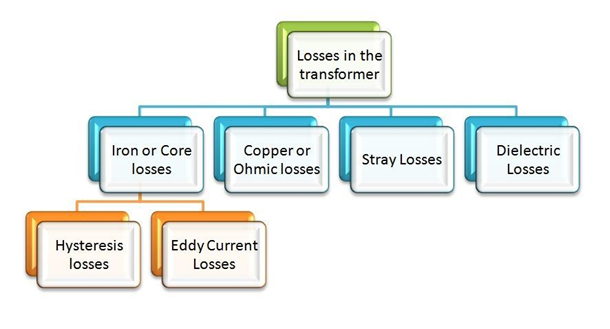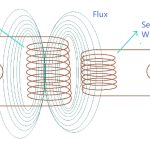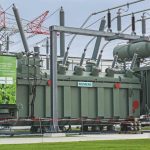Any Device has few losses in practical applications. The main losses that occur in the transformers are Copper losses, Core losses and Flux leakage.
Copper Losses
Copper loss is the loss of energy, due to the heat produced by the current flow through the windings of the transformers. These are also called as “I2R losses” or “I squared R losses” as the energy lost per second increases with the square of the current through the winding and is proportional to the electrical resistance of the winding.
This can be written in an equation as
IPRP+ISRSIPRP+ISRS
Where
· IP = Primary Current
· RP = Primary Resistance
· IS = Secondary Current
· RS = Secondary Resistance
Core Losses
Core Losses are also called as Iron Losses. These losses depends upon the core material used. They are of two types namely, Hysteresis and Eddy Current losses.
· Hysteresis Loss − The AC induced in the form of magnetic flux keeps on fluctuating (like rise and falls) and reversing the direction according to the AC voltage induced. Some energy is lost in the core due to these random fluctuations. Such loss can be termed as Hysteresis loss.
· Eddy Current Loss − While this whole process goes on, some currents are induced in the core which circulate continuously. These currents produce some loss called as Eddy Current Loss. Actually the varying magnetic field is supposed to induce current only in the secondary winding. But it induces voltages in the nearby conducting materials also, which results in this loss of energy.
· Flux Leakage − Though the flux linkages are strong enough to produce the required voltage, there will be some flux which gets leaked in practical applications and hence results in the energy loss. Though this is low, this loss is also countable when it comes to high energy applications.


